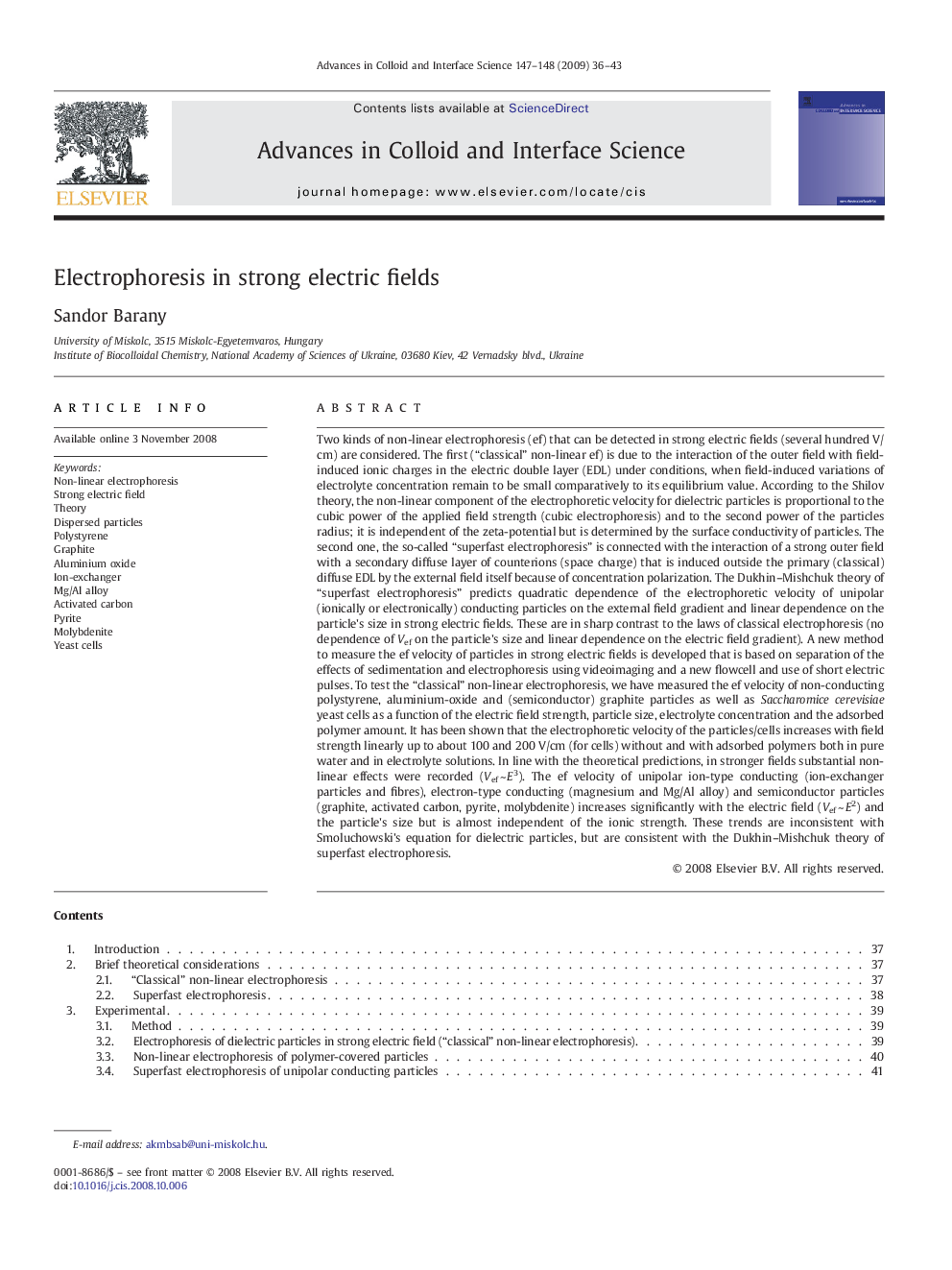| کد مقاله | کد نشریه | سال انتشار | مقاله انگلیسی | نسخه تمام متن |
|---|---|---|---|---|
| 591112 | 1453596 | 2009 | 8 صفحه PDF | دانلود رایگان |

Two kinds of non-linear electrophoresis (ef) that can be detected in strong electric fields (several hundred V/cm) are considered. The first (“classical” non-linear ef) is due to the interaction of the outer field with field-induced ionic charges in the electric double layer (EDL) under conditions, when field-induced variations of electrolyte concentration remain to be small comparatively to its equilibrium value. According to the Shilov theory, the non-linear component of the electrophoretic velocity for dielectric particles is proportional to the cubic power of the applied field strength (cubic electrophoresis) and to the second power of the particles radius; it is independent of the zeta-potential but is determined by the surface conductivity of particles. The second one, the so-called “superfast electrophoresis” is connected with the interaction of a strong outer field with a secondary diffuse layer of counterions (space charge) that is induced outside the primary (classical) diffuse EDL by the external field itself because of concentration polarization. The Dukhin–Mishchuk theory of “superfast electrophoresis” predicts quadratic dependence of the electrophoretic velocity of unipolar (ionically or electronically) conducting particles on the external field gradient and linear dependence on the particle's size in strong electric fields. These are in sharp contrast to the laws of classical electrophoresis (no dependence of Vef on the particle's size and linear dependence on the electric field gradient). A new method to measure the ef velocity of particles in strong electric fields is developed that is based on separation of the effects of sedimentation and electrophoresis using videoimaging and a new flowcell and use of short electric pulses. To test the “classical” non-linear electrophoresis, we have measured the ef velocity of non-conducting polystyrene, aluminium-oxide and (semiconductor) graphite particles as well as Saccharomice cerevisiae yeast cells as a function of the electric field strength, particle size, electrolyte concentration and the adsorbed polymer amount. It has been shown that the electrophoretic velocity of the particles/cells increases with field strength linearly up to about 100 and 200 V/cm (for cells) without and with adsorbed polymers both in pure water and in electrolyte solutions. In line with the theoretical predictions, in stronger fields substantial non-linear effects were recorded (Vef ~ E3). The ef velocity of unipolar ion-type conducting (ion-exchanger particles and fibres), electron-type conducting (magnesium and Mg/Al alloy) and semiconductor particles (graphite, activated carbon, pyrite, molybdenite) increases significantly with the electric field (Vef ~ E2) and the particle's size but is almost independent of the ionic strength. These trends are inconsistent with Smoluchowski's equation for dielectric particles, but are consistent with the Dukhin–Mishchuk theory of superfast electrophoresis.
Journal: Advances in Colloid and Interface Science - Volumes 147–148, March–June 2009, Pages 36–43